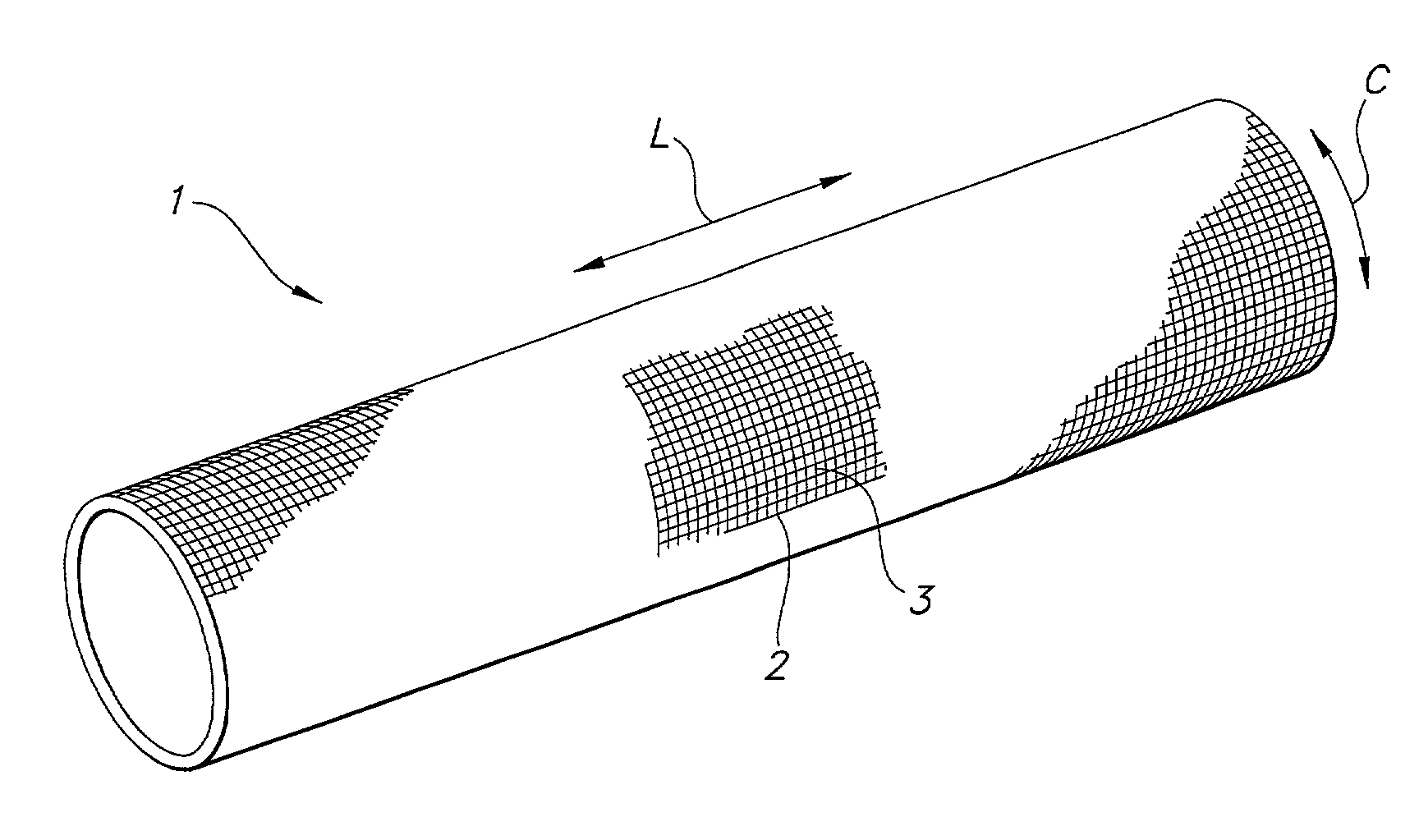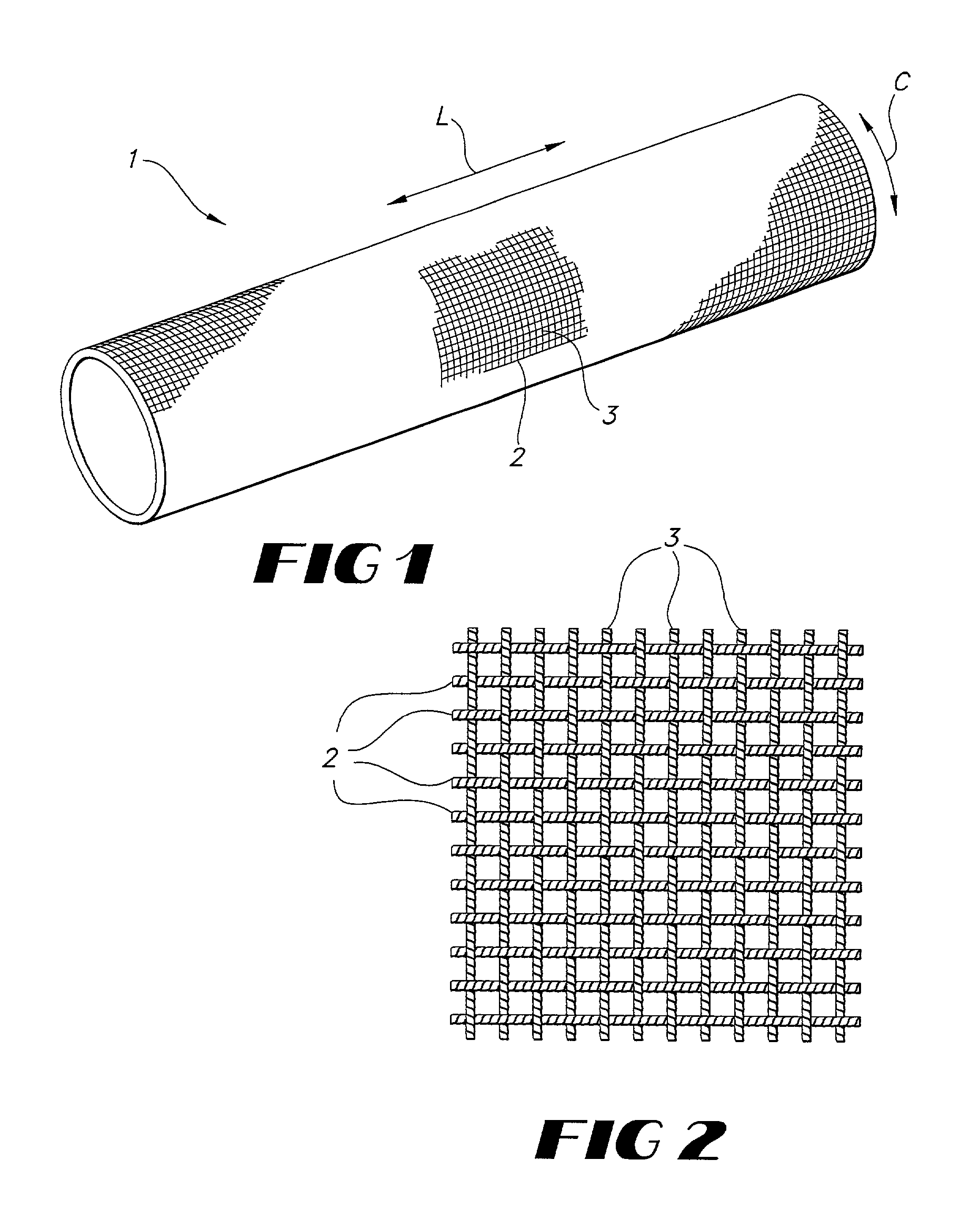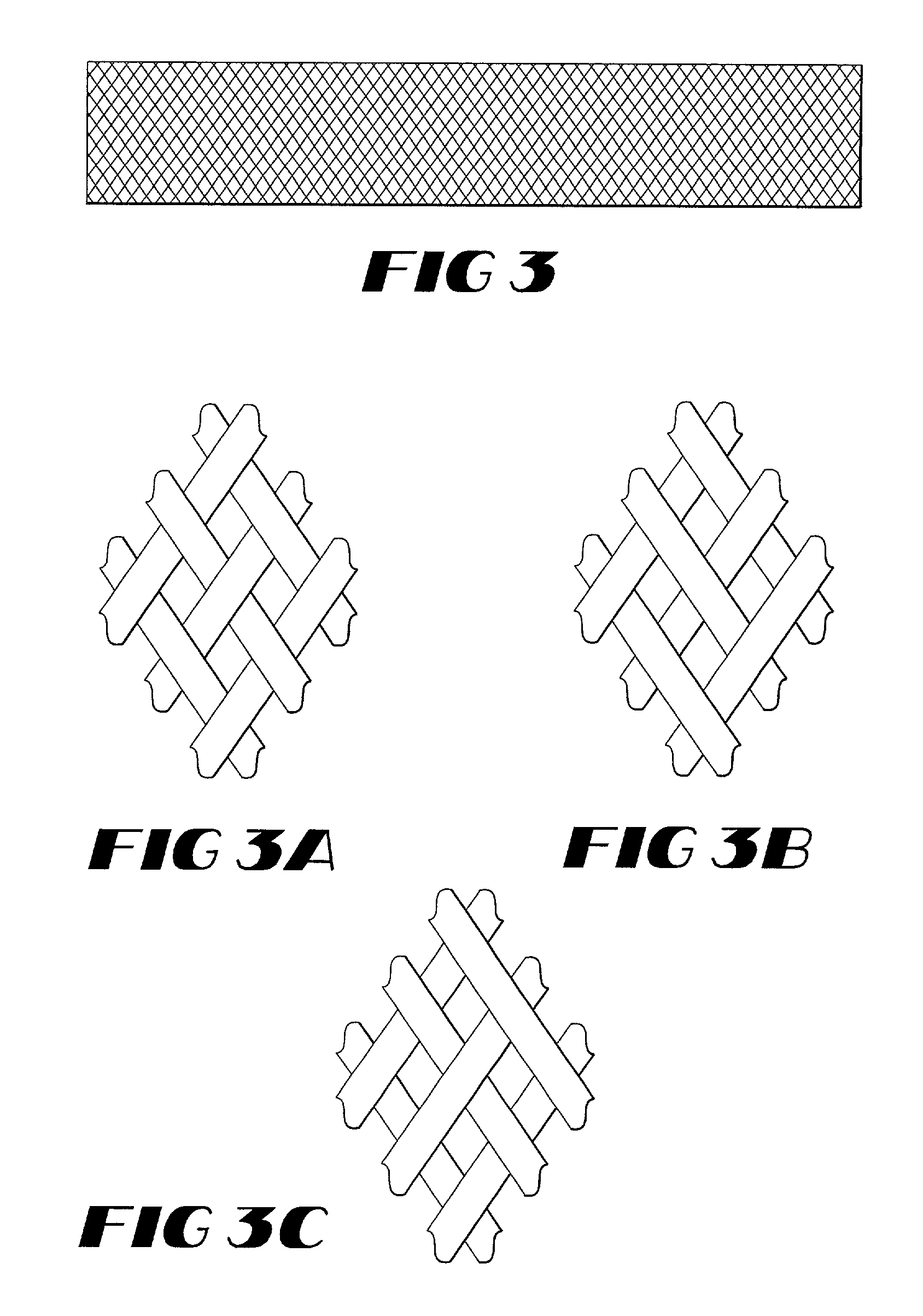Implantable textile prostheses having PTFE cold drawn yarns
a technology of textile prosthesis and cold drawn yarn, which is applied in the direction of prosthesis, blood vessels, weaving, etc., can solve the problems of loss of structural integrity, graft failure, and the use of these types of textile constructions, and achieves enhanced handling characteristics, high molecular structure, and uniform linear density
- Summary
- Abstract
- Description
- Claims
- Application Information
AI Technical Summary
Benefits of technology
Problems solved by technology
Method used
Image
Examples
example 1
Woven Construction
[0052]A prosthesis is flat woven on an electric jacquard loom in a tubular configuration. A 1 / 1 plain, tubular weave is used with a warp yarn of 225 denier, 30 filament cold drawn PTFE yarn. A 225 denier, 30 filament cold drawn PTFE yarn is used with 160 warp ends per inch per layer and 120 pick yarns per inch per layer.
[0053]After weaving into a tubular prosthesis, the prosthesis is cut to a desired length, desirably with a laser to cut and fuse the ends simultaneously. The prosthesis is cleaned with sodium dodecyl sulfate and then rinsed with deionized water. The prosthesis is placed over a mandrel and heat set to precisely set the diameter and to remove any creases or wrinkles.
example 2
Woven Construction
[0054]A graft-stent composite, in accordance with the present invention, is formed from a plain weave tubular fabric having a warp yarn of 225 denier, 30 filament cold drawn PTFE yarn and weft yarn of 225 denier, 30 filament cold drawn PTFE yarn. The ends per square inch are 188 per layer while the picks per inch are 88 per layer. The fabric so formed has a wall thickness of approximately 0.12 mm or less.
[0055]After weaving into a tubular prosthesis, the prosthesis is cut to a desired length, desirably with a laser to cut and fuse the ends simultaneously. The prosthesis is cleaned with sodium dodecyl sulfate and then rinsed with deionized water. The prosthesis is placed over a mandrel and heat set to precisely set the diameter and to remove any creases or wrinkles.
[0056]The prosthesis is optionally be crimped to impart longitudinal compliance and radial support. Crimp patterns shown in FIG. 6 includes a series of wave-like crimps therealong. Crimps may be imparted ...
example 3
Braided Construction
[0058]A regular twill braid is used to produce a tubular prosthesis. The warp yarns and fill yarns are constructed of a 225 denier, 30 filament cold drawn PTFE yarns. A prosthesis is braided using 192 bobbins and a 55 degree helix angle.
[0059]After braiding into a tubular prosthesis, the prosthesis is cut to a desired length, desirably with a laser to cut and fuse the ends simultaneously. The prosthesis is cleaned with sodium dodecyl sulfate and then rinsed with deionized water. The prosthesis is placed over a mandrel and heat set to precisely set the diameter and to remove any creases or wrinkles.
PUM
| Property | Measurement | Unit |
|---|---|---|
| linear density | aaaaa | aaaaa |
| linear density | aaaaa | aaaaa |
| linear density | aaaaa | aaaaa |
Abstract
Description
Claims
Application Information
 Login to View More
Login to View More - R&D
- Intellectual Property
- Life Sciences
- Materials
- Tech Scout
- Unparalleled Data Quality
- Higher Quality Content
- 60% Fewer Hallucinations
Browse by: Latest US Patents, China's latest patents, Technical Efficacy Thesaurus, Application Domain, Technology Topic, Popular Technical Reports.
© 2025 PatSnap. All rights reserved.Legal|Privacy policy|Modern Slavery Act Transparency Statement|Sitemap|About US| Contact US: help@patsnap.com



